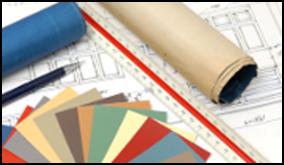Copyright © 2024 American Organization of Building Companies All Rights Reserved
Designing Your Project
Creative & innovative design solutions turn your project into reality
Planning & Budgeting
Proper project planning and budgeting saves time and money
Tips & Tools
Tips & Tools that will help you throughout your project
CREATING A BUDGET
Establishing a Preliminary Budget
It’s a big project. Remodeling the home typically means a big investment of both time and money, but when what is budgeted comes up short, it can be more akin to a giant headache.
Taking control of the financial aspect right from the starting line can help you avoid potential hang-ups and unwanted results.
The first objective when planning any sort of home renovation project is to determine how much you can – or are willing to – spend. This should include both cash and financed money.
If you are basing this amount of what you have ‘priced out,’ be sure to recall that unexpected situations and small details can end up adding substantially to the overall cost. Thus, to be safe, you should likely add 10 % to whatever total you arrive at. Also don’t forget to add in the costs of permits.
Once the total budget is outlined, then it is time to break it down.
Setting aside money for each area of the remodel doesn’t have to be difficult math. By using an architectural designer and building specialist, they can assist you in establishing a realistic estimated preliminary budget of each area of work to be completed.
These then can be used to determine what proportion of the money has to go to each task. Once this is figured, you can become more particular about materials to be used, as you will know what you have to spend.
Tips for Creating a Budget
When creating a budget, keep the following suggestions in mind:
• Educate yourself on the average cost of a remodel. A rule of thumb is to not let your kitchen-remodeling
budget exceed 15% of your home’s fair market value.
• Plan your budget for a 10% overage in case there are unexpected expenses that occur.
• To avoid incorrect cabinetry measurements, talk with your architectural designer about any major
appliances you want to purchase before you finalize the design, since they will impact the overall
measurement of the room.
• Work with an architectural designer/project consultant to understand the cost differences between the
various types of material, woodworking/trim styles and finish techniques. Determine the aspects of your
project, cabinetry selections, finishes, and kitchen/bath design that are non-negotiable, whether it’s the
type of material or finish you choose.
• To scale back financially, ask yourself if all of the features are necessary. However, bear in mind that what
you might not miss now could be an essential feature months or years later. Avoid future disappointment by
including as much functionality as you truly need as early as possible in the design process with your
architectural designer.
Invest in Functionality
Cabinets, storage, and decorative enhancements are not only a purchase—they’re an investment in your home and your future, an investment that will pay dividends every day for you and your family as you use and enjoy the space you've created.
Remember, you're enhancing your existing space to make it more beautiful and functional for years to come. When considering costs, it is important to consider the quality behind the craftsmanship as well as the quality behind the professionals who help you design and create your project.
When making a significant purchase, it all comes down to asking yourself—what do you need versus what do you want?
This motto holds true in many cases, but good design-build solutions not only provide you with what you genuinely need for your home, but what you really want as well. Consider all of the functionality you want from your space and how your project managers can help you fulfill those needs.
Design-Build cabinetry and woodwork will provide extensive selection of wood species, door styles, finish techniques, storage solutions and decorative enhancements – all at varying price points – gives you the ability to mix and match the things you want, with the things you need – and have it all add up to the perfect room for your lifestyle at a price that will work for your bank account.
TIPS TO HELP YOU BUDGET FOR YOUR HOME PROJECT









